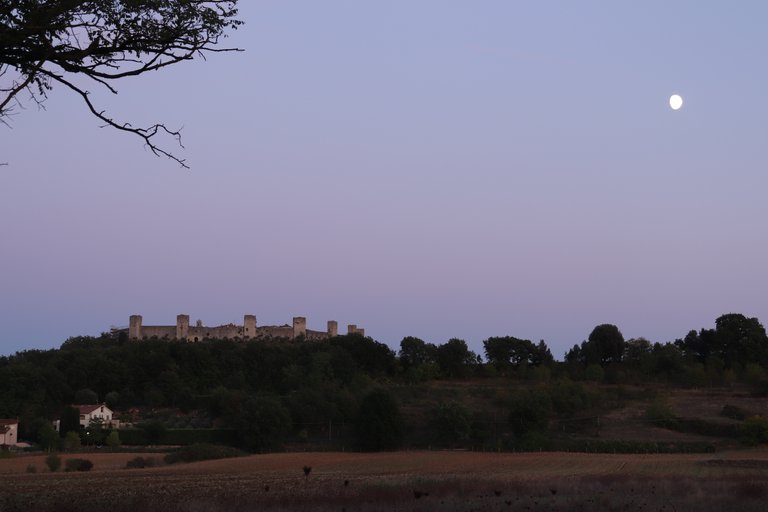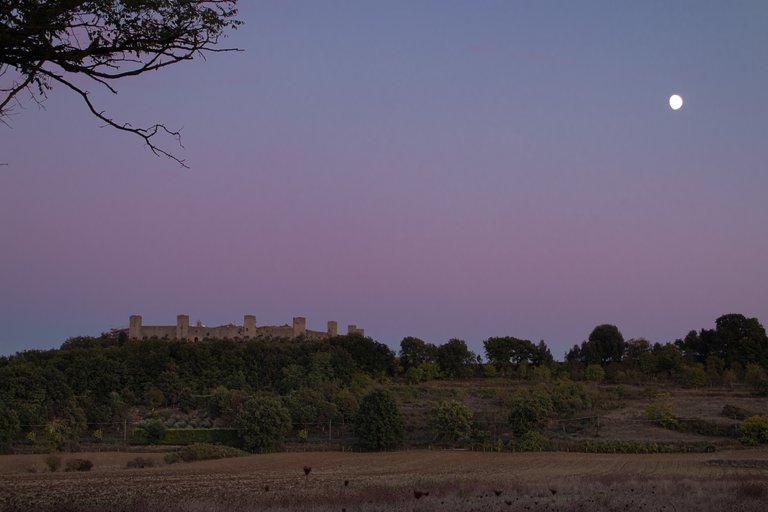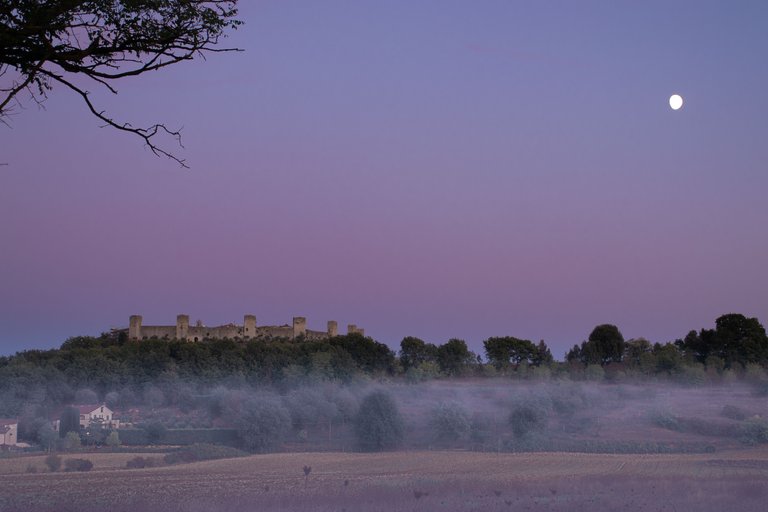
My first post cannot but be linked to one of my great passions: photography.
It is no coincidence that I attached a photo of myself and a camera to my introduction to Hive!
What you see as the cover image of the post is a shot of a famous medieval Tuscany borgo, Monteriggioni.
Today I want to show you an example of a RAW photo that I edited in Photoshop and explain in simple terms the difference between RAW and JPEG.
At the time of shooting my camera, Canon eos 800d, can save the same image in both modes, it is very versatile and I recommend it to anyone who is looking for an entry level SLR.
With a JPEG format the image is ready for viewing on any device (smartphone, tablet, PC etc.), for editing and/or for sharing on social networks.
What is the big deal about JPEG?
The camera compresses the colours and information in order to save the photo in this format, so any subsequent modification worsens the quality/definition of the image and it is never possible to return to the original quality.
The RAW format allows you to have all the information absorbed by the camera during the shot, the photo is not processed or compressed by the camera and is actually heavier in terms of storage.
What is the advantage of the RAW format?
Well, it's actually quite simple, any change to the photo is reversible and we can get all the possible combinations of light and colours we like from the same file, all without deteriorating the quality of the photo. It is like having the negative of a photo always available, we can really define it as a digital negative.
If you want, you can edit the RAW of the photo you are interested in and export it as a JPEG for quick sharing with your favourite social networks.
Let's come to the disadvantages of this particular way of saving our shots.
The first one I have already mentioned is the increase in file size.
Other factors to be considered are the need for a special programme to manage RAW formats (such as Adobe Lightroom and GIMP, the first for a fee and the second free) and the need for SLR cameras.
Well.. You choose!
As promised, I will also show you below the results of my modifications to the cover photo to make it more similar to the sensations I had perceived at the moment of shooting.

In the photo above, all I've done is vary the colour levels and/or brightness in specific areas, but I'm sure the more attentive of you will also notice the removal of the houses that were in the bottom left corner of the original.

In this last picture I did something more creative.
I edited the photo a few days before Halloween and I thought I would give the image a more gloomy feel.
In this case I left the houses and added a layer of fog that didn't exist at all in the original shot.
I admit that the final effect is maybe too fake and you can see very well that it is not a real effect, but I hope I have made you understand the potential of using RAW saving formats when shooting with SLR cameras.
What about you? Which saving format do you usually use?
Have you ever tried to shoot in RAW format?
Let me know your experiences below in the comments!
If you liked the content, feel free to like and follow my page to see the next posts!
Amazing post, full of really interesting content on photography. Thanks
@aurzeq I am very glad you appreciated the content!
Molto interessante, mi ricordo che anche io tempo fa lavoravo con i file RAW della mia fotocamera, poi ho ricominciato a usare i JPG perché avevo finito lo spazio nel PC XD
Comunque la fotocamera che usi sembra molto performante, ho notato che Canon a livello di colori è fantastica; purtroppo volendo fare anche video punto sempre su Sony che rimane la mia preferita.
Bellissimo post comunque, grazie per la condivisione!
Si infatti ho deciso di comprare un Hard disk esterno appositamente per la fotografia.
Grazie mille per il feedback